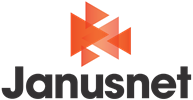It’s no secret cybersecurity threats are ever-evolving, making it increasingly difficult for organizations to secure data, networks, and applications. Many organizations globally are embracing zero trust architectures to safeguard and improve their cybersecurity posture.
Zero trust is a cybersecurity framework that operates on the notion of "never trust, always verify." It assumes every user, device, and application requesting access to a network is a potential threat, and therefore requires continuous authentication, authorization, and validation before granting access.
A 2022 Statista report revealed 80 percent of survey respondents have plans to adopt zero trust in the future or have already adopted it.
John Sherman, the U.S. Department of Defense Chief Information Officer recently acknowledged the department’s intention to deploy zero trust across most of its enterprise systems by 2027, commenting “… the adversary capability we’re facing leaves us no choice but to move at that level of pace.”[1]
Data Classification: A Data-centric Foundation to Achieve Zero Trust.
Data-centric data classification is a fast, proven cornerstone to help organizations support zero trust architectures.
Data classification is the process of categorizing data based on its sensitivity, importance, and other criteria. By classifying data, organizations can identify and prioritize data that needs protection, thereby helping safeguard their most critical assets against unauthorized access, disclosure, and mishandling and meet compliance requirements.
Best practice data classification requires classifying files with markings visible to the human eye AND adding markings to a file’s metadata. Basic examples of metadata include the creation date or file name. More advanced examples of metadata marking include adding classifications that indicate how sensitive information must be handled as it moves across and beyond an organization’s network.
Metadata tagging with markings is the only way to ensure technology platforms automatically uphold information handling requirements for data protection and compliance.
Data classification improves zero trust frameworks in several compelling ways:
- Attribute-based access control (ABAC): ABAC supports multi-level security by enabling (or limiting) access to data based on a combination of attributes. For example, ABAC lets organizations segment access to information according to criteria such as user (e.g., country, clearance, nationality), environmental (e.g., device, location, IP), and data attributes (e.g., sensitivity, classification).
- Enhanced security for sensitive data: Blending data classification and zero trust lets organizations implement appropriate security measures to improve data protection and management controls based on information sensitivity. For example, organizations can protect highly sensitive data by having users, or technology solutions, apply stringent markings, such as OFFICIAL or SECRET. In contrast, less sensitive data can take a marking of CONFIDENTIAL or CONTROLLED UNCLASSIFIED INFORMATION.
- Compliance with regulatory requirements: Many regulatory frameworks require organizations to classify data and implement specific security measures based on the classification. By combining zero trust and data classification, organizations can confidently meet such requirements, reducing the risk of non-compliance and associated penalties.
- Improved visibility and control: Zero trust and data classification both provide greater visibility and control over an organization's data. By continually classifying data based on its sensitivity and importance and using the metadata in each file to help verify the access rights of users, devices, and applications, organizations can better understand their data and network assets and take appropriate action to protect them.
- More informed decision-making: Blending zero trust and data classification lets organizations make more informed decisions about managing and protecting data. For example, understanding and marking sensitive data enables organizations to improve how that data is used, accessed, stored, and shared.
The Janusnet Difference to Achieve a Quick Zero trust Win.
For nearly two decades, defense, intelligence, government agencies, and commercial organizations have trusted Janusnet data classification solutions to reduce the risk of data loss and mishandling, meet compliance requirements, and improve information control.
We help organizations apply and manage visible and metadata classification markings to ensure data protection in a zero trust environment. Janusnet technology lets organizations apply user-driven and automated policy-driven markings to support the ‘least privilege’ stance to data, applications, and networks.
The Janusnet data classification differences to achieve zero trust include:
- A familiar user-interface to simplify and accelerate deployment and adoption.
- Cost-effective data classification requiring minimal maintenance and leveraging existing infrastructures, such as Attribute Based Access Control (ABAC), DLP, encryption, and CASB systems.
- Configuration without a network connection post-deployment, the reliability to run on a “set and forget” basis, and built-in audit capabilities.
- Flexibility to change control systems and remediate incorrectly marked information without complex, time-consuming, expensive software, or additional hardware.
- No need for extra, or dedicated, hardware or software.


